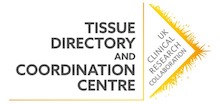Spotlight on – Matt McLoughlin
In our latest blog post we meet Matt McLoughlin, VP Compliance and Categories at Scientist.com, to find out more about his work in supporting the pharmaceutical industry access regulated services to drive their R&D pipelines forward.

What is your role, and what does it involve?
Within my current role, I am responsible for all compliance-related activities and processes that support the suppliers and clients utilising the Scientist.com platform. This ranges from ensuring we have an industry leading commercial due diligence process to meet the needs of the biopharma industry to leading a global team of Category Directors with a variety of expertise, including human biological samples (“HBS”) and animal welfare (AW).
How long have you been at Scientist.com, and what did you do before?
I joined Scientist.com (formerly Assay Depot) in 2016. Prior to that I worked within the pharmaceutical industry for 16 years at AstraZeneca (AZ), spending 12 years as a senior scientist working in R&D Genetics and Personalised Healthcare & Biomarkers. I then moved to Procurement to become responsible for the strategic sourcing of all external HBS across global AZ affiliates. Within this role, I implemented a new category strategy that transformed the compliance, visibility, traceability and accessibility to HBS for scientists across the global AZ geographic footprint.
What working achievement are you most proud of?
My biggest professional achievement was the conception and development of our COMPLi® functionality. This was designed to support biopharma procure HBS from external third parties whilst increasing visibility, traceability and control to ensure a fully ethical sourcing process. Originally designed for HBS, the COMPLi functionality has now been applied to multiple other research areas and regulated services and is utilized by 17 of the top 25 global biopharma along with numerous other biotech companies.
Tell us about a project that is top of your to-do list or that particularly interests you.
We are currently developing a new feature that will enable biobanks to have their own internet storefronts to manage requests for samples whilst utilizing the existing benefits Scientist.com provides in terms of legal, finance and admin support. This will enable a biobank to have a fully external-facing solution that can be created within days, ensuring they have full control over requests and which samples are offered/provided, and increasing their outward-facing presence.
Do you have any key messages for biobanks in the UK?
I think the most important message is to remain open to alternatives in the changing environment of sample provision. Historically, the only way samples could be provided was by biobanks creating a burdensome solution themselves or by using a third-party commercial provider to manage the requests. Both of these options have positives and negatives, but there are now alternatives to these models that can help biobanks retain full control of their inventory while increasing the efficiency of working with researchers.
What do you consider to be the most exciting developments in biobanking at the moment?
I think the most exciting development in biobanking is that biobanks can now be easily self-sustainable and retain full control of all aspects of sample provision much more easily than ever before. New tools have been developed to assist biobanks increase the visibility and accessibility of the samples they house. In the past couple of years, the work that Scientist.com and the UKCRC TDCC have been doing has provided an alternative method to support biobank sustainability, ensuring full traceability, visibility, and control of who accesses samples.
What is the biggest challenge of your job?
Changing preconceptions. Historically, biobanks have been very cautious when any third party has approached them about supporting their sample provision. I think this is borne from historical issues and an “us vs them”, aka an academia vs commercial attitude. Fortunately, this mindset has begun to change as needs have changed, but now the supporting functions of biobanks are required to change. For example, Scientist.com has had a lot of biobanks interested in joining our marketplace, but the challenge is always the legal function supporting the biobanks who aren’t used to the model. So, our challenge is to educate, support and address the concerns biobanks may have and help them flourish by ensuring their samples are used by researchers as intended by the donors who kindly provided them.
